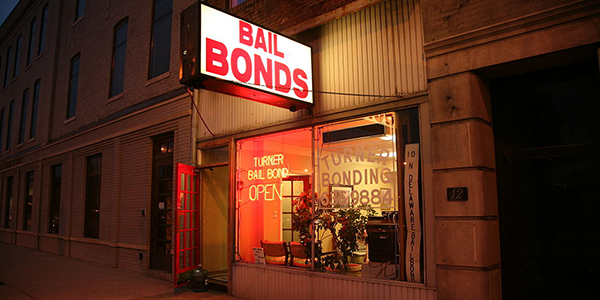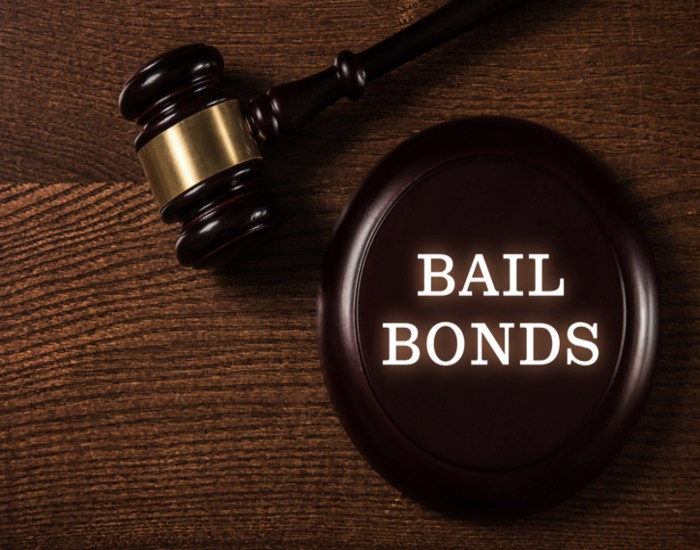What You Must Know Prior To Authorizing a Bail Bonds Contract
Wiki Article
Recognizing the Fundamentals of Bail Bonds: What You Required to Know
Navigating the complexities of bail bonds is a necessary aspect of the legal system that can considerably impact the charged's journey with court procedures. A bail bond functions as a financial guarantee for the court, promoting temporary launch from wardship while waiting for trial. Nevertheless, the complexities of exactly how bail bonds run, the numerous kinds readily available, and the important considerations in selecting a trustworthy bail bondsmansman can be daunting. Understanding these elements is important, as the effects of errors may bring about unforeseen issues that extend much beyond the court. What are the basic facets that must grasp to efficiently steer this procedure?What Is Bail?
Bail is an economic arrangement that allows an individual charged of a criminal activity to be launched from custody while waiting for test. The primary function of bail is to ensure that the offender stands for future court procedures (Bail Bonds). Usually set by a court, the bail amount differs depending on the nature of the criminal activity, the defendant's criminal background, trip danger, and other relevant variablesWhen bail is approved, the accused or an agent must pay a defined sum, which might remain in money or via a bail bond. In many cases, bail can be denied entirely, especially for significant offenses or if the suspect presents a considerable danger to public safety and security. The concept of bail is rooted in the assumption of innocence, enhancing the concept that individuals should not be punished before a sentence.

Understanding Bail Bonds
A bail bond is a monetary tool that assists in the release of an implicated individual from safekeeping, acting as an assurance for their appearance at future court dates. This setup allows accuseds to keep their liberty while waiting for trial, minimizing the worries connected with imprisonment. The bail bond process normally involves a third-party firm, understood as a bond bondsman, who gives the essential funds to the court in support of the accused.Bail bonds can be found in numerous forms, including guaranty bonds, residential or commercial property bonds, and cash bonds, each with distinctive requirements and ramifications. Surety bonds, the most common type, need a superior settlement, usually a percent of the complete bail amount, which is non-refundable. In contrast, a building bond entails utilizing actual estate as collateral, while cash money bonds require the full bail quantity to be paid in advance.
Understanding the nuances of bail bonds is critical for defendants and their families. It is vital to comprehend the possible financial ramifications, including commitments and charges to the bail bondsmansman, along with the legal responsibilities linked to guaranteeing court looks. Expertise of these components help in making informed decisions during a challenging time.
Exactly How Bail Bonds Work
The procedure of safeguarding a bail bond usually entails a number of key actions that make sure the implicated can restore their liberty while awaiting trial. The individual or their depictive get in touches with a bail bondsman, who examines the instance and the associated dangers. The bail bondsman will need info concerning the accused, including the costs, the bail amount set by the court, and any type of pertinent individual information.
Once the bondsman consents to supply the bond, the implicated or their agent has to pay a non-refundable fee, typically a portion of the complete bail quantity. This fee makes up the bondsman for tackling the economic threat of guaranteeing the implicated shows up in court. Sometimes, security might also be called for, such as property or beneficial properties, which acts as safety for the bond.
After the fee and any collateral are arranged, the bail bondsman submits the necessary documents to the court. Upon authorization, the bail is published, and the implicated is released from guardianship. It is essential for the accused to abide by all court days and problems, as failing to do so can result in the forfeiture of the bond and possible lawful consequences.
Kinds Of Bail Bonds
Different kinds of bail bonds are offered to match different conditions and demands. The most typical type is the surety bond, where a bail bondsman warranties payment of the full bail amount to the court in exchange for a non-refundable charge, typically around 10% of the bail. This setup allows offenders to secure their launch without paying the entire bail upfront.An additional kind is the cash bond, which needs a co-signer or the defendant to pay the full bail quantity in cash money directly to the court click this site - Bail Bonds. This option is usually liked for reduced bail amounts, as it makes certain the money is returned upon the offender's look whatsoever court process
Residential or commercial property bonds entail using actual estate as security. In this situation, the court places a lien on the residential property, which can be surrendered if the defendant falls short to show up.
Finally, federal bail bonds are particularly created for federal instances, usually including greater quantities and added complexities. Comprehending these numerous bail bond types is vital look at this now for defendants and their family members in making notified decisions throughout a tough time.
Picking a Bondsman
When choosing a bondsman, it is important to take into consideration numerous crucial elements that can influence the total experience and result. Review the bail bondsman's credibility by looking into online testimonials and getting referrals from trusted sources. A trusted bail bondsmansman will have a background of professionalism and trust and successful cases.
It is additionally crucial to understand the charge framework. Many bail bondsmensman charge a non-refundable fee, typically around 10% of the bail quantity. Be cautious of any type of covert charges or uncommon settlement techniques. Transparency in prices is a characteristic of a reliable bondsman.
Final Thought
In summary, understanding the basics of bail bonds is vital for people associated with the legal system. Bail works as a monetary assurance of court appearance, while various sorts of bail bonds satisfy different circumstances. Recognizing the operational devices of bail bonds and picking a reliable bail bondsmansman can substantially affect the total experience. A detailed assessment of offered options makes sure educated decision-making, ultimately helping with a smoother navigating through the complexities of the lawful procedure.The details of how bail bonds run, the different types available, and the critical considerations in selecting a respectable bail bondsman can be intimidating. The bail bond process normally includes a third-party firm, understood as a bail bondsman, who offers the needed funds to the court on part of the my sources implicated.
The most usual kind is the guaranty bond, where a bail bondsman assurances repayment of the complete bail quantity to the court in exchange for a non-refundable fee, commonly around 10% of the bail. Bail offers as a monetary assurance of court look, while different types of bail bonds provide to various situations. Comprehending the operational mechanisms of bail bonds and selecting a credible bail bondsman can substantially influence the overall experience.
Report this wiki page